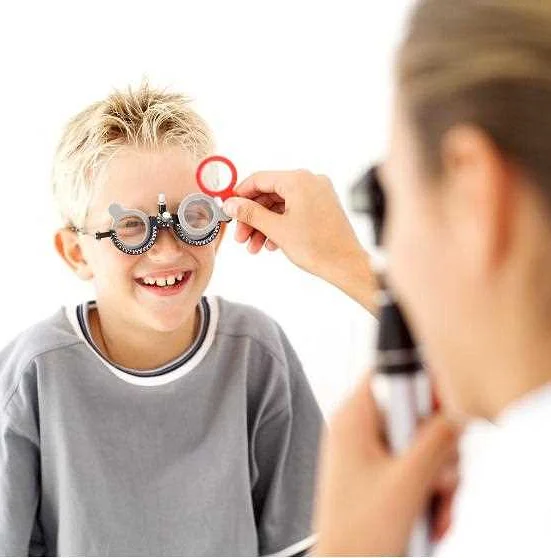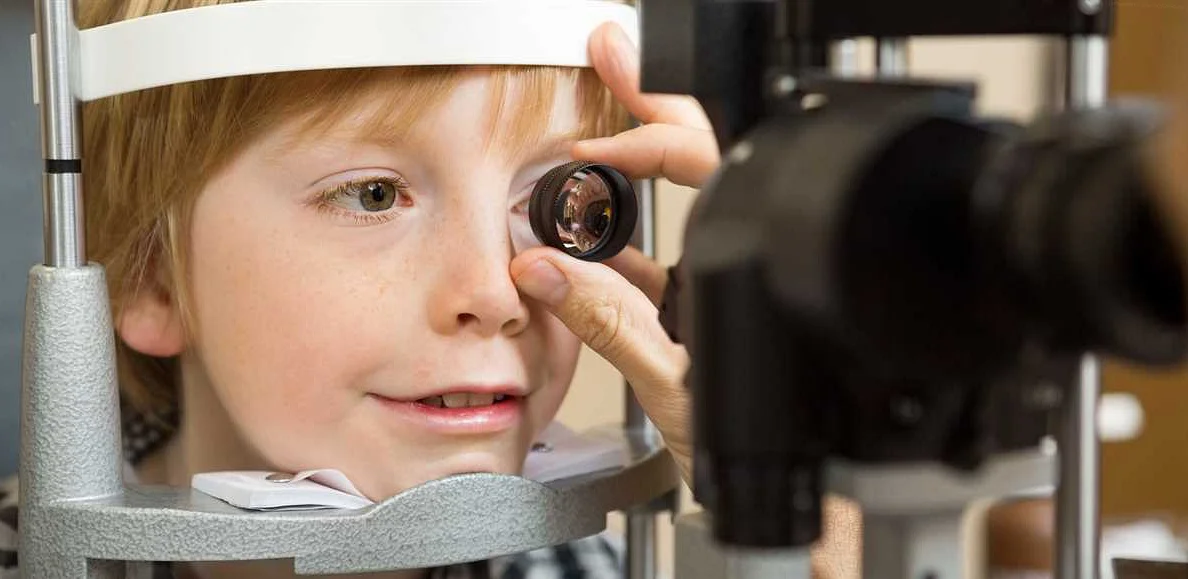Understanding Refractive Errors in Children
Содержимое
Learn about refractive errors in children, including myopia, hyperopia, and astigmatism. Find out how to identify and treat these vision problems in young kids.
Refractive errors are a common eye condition that affects many children worldwide. These errors occur when the shape of the eye prevents light from focusing correctly on the retina, leading to blurred vision. As children grow, their eyes undergo changes that can result in different refractive errors.
There are several types of refractive errors that are commonly seen in children. One of the most common types is myopia, or nearsightedness, which causes nearby objects to appear clear while distant objects appear blurry. Another common refractive error is hyperopia, or farsightedness, which causes distant objects to appear clearer than close objects. Astigmatism is another common refractive error that causes blurred or distorted vision at any distance.
The causes of refractive errors in children are not fully understood, but genetics can play a role. If one or both parents have a refractive error, the child may be at a higher risk of developing one as well. Environmental factors, such as excessive near work or prolonged screen time, can also contribute to the development of refractive errors in children.
Symptoms of refractive errors in children may vary depending on the type and severity of the error. Some common symptoms include squinting, headaches, eye strain, difficulty focusing, and poor academic performance. It is important for parents to be aware of these symptoms and have their child’s eyes checked regularly by an eye care professional.
Treatment options for refractive errors in children include wearing corrective eyeglasses or contact lenses. These devices help to correct the refractive error and improve vision. In some cases, vision therapy may be recommended to help strengthen the eye muscles and improve focusing abilities. In more severe cases, refractive surgery may be an option for older children.
In conclusion, refractive errors are a common eye condition in children, but with proper diagnosis and treatment, the impact on a child’s vision can be minimized. Regular eye examinations and early intervention are key in ensuring that children receive the necessary care and support for their visual health.
Causes of Refractive Errors in Children

1. Genetics: Refractive errors in children can be inherited from their parents. If one or both parents have refractive errors, there is an increased likelihood that their children will also develop these vision problems.
2. Eye Shape and Size: The shape and size of a child’s eye can contribute to refractive errors. For example, if a child’s eyeball is longer or shorter than average, it can cause light to focus in front of or behind the retina, leading to nearsightedness or farsightedness, respectively.
3. Environmental Factors: Certain environmental factors can increase the risk of refractive errors in children. Excessive near work, such as reading or using electronic devices for long periods of time, can strain the eyes and contribute to the development of myopia. Lack of natural lighting and spending too much time indoors can also be risk factors.
4. Eye Injuries or Diseases: Trauma to the eye or certain eye diseases can cause changes in the shape or structure of the eye, leading to refractive errors. Conditions such as cataracts or corneal irregularities can also affect how light enters the eye and causes blurry vision.
5. Prematurity: Premature birth can increase the risk of refractive errors in children. The eyes of premature babies may not have fully developed, and they may be more prone to developing issues such as retinopathy of prematurity or other abnormalities that can affect vision.
6. Age: Refractive errors can develop at any age, but they are more common in children as their eyes are still developing. As children grow, their eyes may undergo changes in shape and size, which can result in refractive errors.
7. Other Medical Conditions: Certain medical conditions, such as diabetes or Down syndrome, can increase the risk of refractive errors in children. These conditions can affect the overall health of the eyes and contribute to vision problems.
It is important for parents to be aware of these potential causes of refractive errors in children and to have regular eye exams to detect and address any vision problems early on.
Symptoms of Refractive Errors in Children
Refractive errors are common eye conditions that affect children’s ability to see clearly. These errors occur when the shape of the eye prevents light from focusing directly on the retina. Several types of refractive errors can affect children, including nearsightedness, farsightedness, and astigmatism.
Children with refractive errors may exhibit a variety of symptoms that can indicate the presence of a problem with their vision. It is important for parents and caregivers to be aware of these symptoms so that they can seek appropriate treatment for their child.
One common symptom of refractive errors in children is difficulty seeing objects that are far away. Children may squint or have trouble reading signs or chalkboard writing from a distance. This can lead to poor performance in school or other activities that require clear vision.
Another symptom is difficulty seeing objects up close. Children may hold books or other objects too close to their face, or they may complain of headaches or eye strain when performing tasks that require near vision, such as reading or writing.
Some children may also experience blurry or double vision. This can make it difficult for them to focus on objects or see details clearly. They may also have trouble judging distances or have poor depth perception.
Children with refractive errors may also exhibit eye fatigue or tiredness. They may rub their eyes frequently or blink excessively, especially after extended periods of near work or visual tasks.
If you notice any of these symptoms in your child, it is important to schedule an appointment with an eye care professional. They can perform a comprehensive eye exam to determine the type and severity of the refractive error and recommend the appropriate treatment options, such as corrective glasses or contact lenses.
Early detection and intervention are key to ensuring that children with refractive errors can see clearly and perform well in school and other activities. By being aware of the symptoms and seeking timely treatment, parents can help their children achieve optimal visual health and development.
Types of Refractive Errors in Children
Refractive errors are a common eye condition among children that can affect their vision. There are several types of refractive errors that can occur in children:
1. Myopia (Nearsightedness): Children with myopia have difficulty seeing objects in the distance clearly. This occurs when the eyeball is too long or the cornea is too curved, causing light to focus in front of the retina instead of directly on it.
2. Hyperopia (Farsightedness): Children with hyperopia have difficulty seeing objects up close. This occurs when the eyeball is too short or the cornea is less curved, causing light to focus behind the retina instead of directly on it.
3. Astigmatism: Children with astigmatism have blurred vision at both near and far distances. This occurs when the cornea is irregularly shaped, causing light to focus at multiple points instead of a single point on the retina.
4. Presbyopia: Presbyopia is a type of refractive error that typically affects adults over the age of 40. However, in rare cases, children can also develop presbyopia. It is a natural aging process where the lens of the eye becomes less flexible, making it difficult to focus on objects up close.
It is important for parents to be aware of these types of refractive errors in children, as they can affect their academic performance and overall quality of life. Regular eye exams and early detection can help in managing these conditions and ensuring optimal vision for children.
Diagnosing Refractive Errors in Children

Diagnosing refractive errors in children is an important step in ensuring their visual health and development. These errors can affect their ability to see clearly at various distances and can lead to difficulties in school and everyday activities.
When diagnosing refractive errors in children, optometrists and ophthalmologists typically conduct a comprehensive eye examination. This examination may include the following tests:
- Visual acuity test: This test measures how well a child can see and read letters and symbols on an eye chart. It helps determine the clarity of their vision at different distances.
- Retinoscopy: This test involves shining a light into the child’s eye and observing the reflection to determine the focusing power of the eye. It helps the eye care professional estimate the child’s refractive error.
- Refraction: During this test, the child looks through a series of lenses while the eye care professional changes the lenses to find the ones that provide the clearest vision. This helps determine the specific prescription needed to correct the refractive error.
- Eye alignment and muscle balance assessment: This assessment checks for any misalignment or imbalance in the child’s eye muscles, which can contribute to refractive errors.
- Eye health examination: The eye care professional will also examine the child’s eyes for any signs of diseases, infections, or other abnormalities that could be causing or contributing to the refractive errors.
It is important for parents to ensure their children receive regular eye examinations, even if they do not display symptoms of refractive errors. Early detection and intervention can prevent potential vision problems from affecting a child’s learning and overall well-being.
If a refractive error is diagnosed, the eye care professional will discuss the treatment options with the parents. These may include prescription eyeglasses or contact lenses to correct the error, or in some cases, vision therapy or refractive surgery.
By diagnosing and treating refractive errors in children promptly, parents can help their little ones achieve optimal visual health and ensure they have the best chance for success in school and in life.